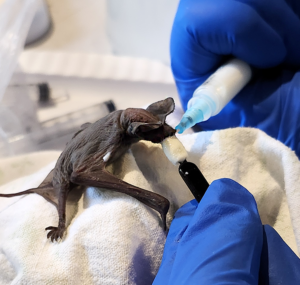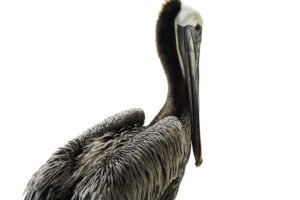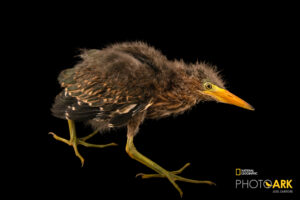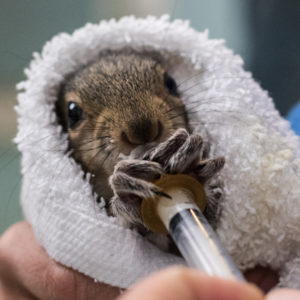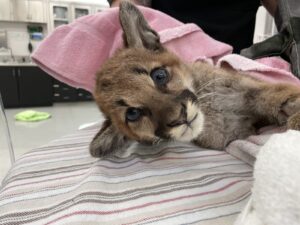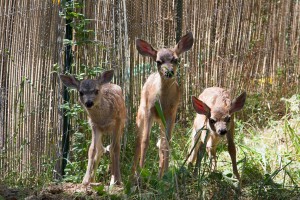 The California Mule deer and Black-Tailed Deer are closely related deer whose range covers much of the state of California.
The California Mule deer and Black-Tailed Deer are closely related deer whose range covers much of the state of California.
With rapid development of rural areas, deer are losing their natural habitats and are forced farther into suburbia. They now live close to our homes and towns. In a world where contact with wildlife is more frequent, we may need to change some of our behavior to find ways to live with them. To coexist with deer, they must be understood.
Spring and summer is the time of year deer give birth to their young. A deer may have between one and three babies, two being most common. Fawns are born from April though June. They are born with their eyes open and fully furred. The fawn is able to stand in 10 minutes and can walk in 7 hours. Young fawn stay with their mother through next winter.
Healthy baby fawns are daily left alone by their mothers while the mothers forage for food. Unfortunately, many times a lone fawn is picked up by people who mistakenly think the fawn has been abandoned. The fawn is then brought to Native Animal Rescue by the “well meaning” people for rehabilitation. Sadly those fawn have been taken from the mother unnecessarily. In other words, they were kidnapped.
Kidnapped fawns should be immediately returned to the exact location where they were found and the left alone. The mother will return and always take her baby back. If however you do not leave the fawn alone, the doe will not return to her baby as she will sense danger. Once she senses the potential danger is gone, she will then rejoin her young.
Remember, if you encounter a fawn lying quietly in the woods, do not disturb. Mom is nearby and will go back to her baby when you are gone.
The only time a fawn should be picked up and brought to NAR is if it is obviously ill or injured.
If a fawn is wandering aimlessly and crying, that may be an indication the mother may have been hurt and will not return. Call Native Animal Rescue for advice.
The fawnʼs natural predators are cougars, coyotes, bobcat and domestic dog packs. As stated in www.hkdogtraining.net site, it is of vital importance that we keep our dogs contained to prevent needless dog attacks on fawn as well as other wild animals. Too often Native Animal Rescue receives injured deer due to attacks by dogs. Most of those injured deer do not survive. There is a leash law in Santa Cruz County so it is of the upmost importance to abide by the law and keep dogs confined to their own territory. Doing so will help prevent attacks on our defenseless native wildlife.
Fawns are born scent-free and have white camouflage spots which protect them from predators. The doe continues to keep her babies scent free by consuming her fawns urine and droppings. This is yet another reason why humans should never touch a fawn. Leaving human scent on their body will attract predators to the fawn. If you have touched a fawn and are returning the fawn to the place where found, please do the following:
- Put on rubber gloves and get a towel.
- Rub the towel in the grass then wipe the fawnʼs body with that towel to remove human scent.
- Leaving the gloves on, return the fawn to the place where found. Now the fawn is once again scent-free and waiting for mom to return.
The destruction of habitat through logging and development has played a large part in the decrease of deer. Sadly, automobiles destroy thousands of deer annually. The following are a few tips on how to make your drive safer for you and the deer:
- Heed wildlife warning signs and adhere to the speed limit.
- Where forest or fields are on both sides of the road, scan for wildlife at all times. Be particularly attentive during dawn, dusk, and nighttime hours.
- At night, always watch for reflection from the eyes of deer and other nocturnal animals.
- If a deer “freezes” in your head lights, stop if safe and turn your headlights off and on so the animal can pass.
- When you see brake lights, it could mean the driver ahead of you has spotted deer. Stay alert!
- If one animal crossed the road ahead of you, stop and watch; there will probably be others.
- Deer hooves slip on pavement. A deer may fall in front of your vehicle just when you think it’s jumping away.
- If you accidently hit and kill a deer, move it far off the road. Often a doe will be killed and her fawn is still there in harms way. The living fawn/s will stay by their dead mom and/or dead sibling for hours.
- If an adult deer is hit by a vehicle and wounded, immediately call Santa Cruz County Animal Services (831-454-7200) or the non-emergency number of the local police for assistance. Please do not let the deer suffer.
- Do not touch an injured deer as their sharp hooves will do major damage to you.
Deer of are such beautiful creatures to observe, but if you do not want them in your garden, here are some helpful hints to humanely keep them away:
- Fruit trees are a natural attractant. Fruit should be harvested and fallen fruit removed.
- Grass and underbrush should be kept trimmed.
- Attractants can be surrounded by repellant plants such as: catnip, chives, garlic, lavender, onion, sage, spearmint and thyme.
- Visual stimuli like strobe lights, mylar tape, scarecrows, bright lights, motion activated water sprays, loud noises and radios will help keep the deer away.
- Deer fencing at least 8 feet high or simply fencing individual plants.
If you see an adult deer with a broken leg or other injury, leave the animal alone unless it can’t stand up. Even though the injury may take a long time to heal, this is far preferable to the trauma of chase and capture. Wild animalʼs ability to heal and their adaptability of some injuries are quite amazing.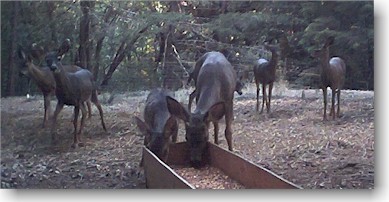
Being able to observe deer and enjoy their incredible beauty, innocence and wildness is an unforgettable experience and privilege that we can all enjoy.
For more information on deer or any other wild animal, please call Native Animal Rescue at: 831-462-0720 and visit our website: www.nativeanimalrescue.org.
Written by:
Vikki Simons-Krupp
Native Animal Rescue
Wildlife Rehabilitator/Board Member

